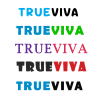Best Full-Stack Frameworks to Learn in 2025
In the ever-evolving world of web development, staying updated with the latest tools and technologies is crucial for every developer—especially those pursuing full-stack development. As businesses demand faster, more scalable, and feature-rich web applications, the importance of choosing the right full-stack framework cannot be overstated. In 2025, several frameworks are expected to lead the pack, making it essential for developers to understand their capabilities and potential.
Whether you're a freelancer, startup founder, or aspiring full-stack developer, knowing the best full-stack frameworks can give you a significant edge. At FreelancerBridge, we’ve researched the top frameworks you should focus on in 2025 to build modern, scalable, and high-performance applications.
Long Description
Why Full-Stack Frameworks Matter
A full-stack framework offers developers the ability to build both the frontend (client-side) and backend (server-side) of an application using a unified toolset. This approach not only improves development speed but also ensures better integration between the two ends.
In 2025, with increased focus on AI integration, real-time data, and performance, the frameworks that offer scalability, community support, and modern development practices will dominate the industry.
Top Full-Stack Frameworks to Learn in 2025
1. Next.js (with Node.js & React)
Why Learn It:
Next.js has grown into a powerhouse framework that allows seamless server-side rendering (SSR), static site generation (SSG), and hybrid applications. In 2025, it continues to dominate with its tight integration with React and API routes, making it a powerful full-stack solution.
Key Benefits:
Built-in API routes
Optimized performance and SEO
Excellent developer experience
Scalable with serverless deployment options
2. Nuxt.js (with Vue.js & Node.js)
Why Learn It:
Nuxt.js is the Vue-based answer to Next.js, offering server-side rendering and full-stack capabilities. Its improved TypeScript support and flexibility make it a strong contender in 2025.
Key Benefits:
Easy setup with Vue 3
Modular architecture
Great for static & dynamic apps
Strong documentation and community
3. Django (with Python)
Why Learn It:
Django remains a favorite in the backend world, and when combined with a frontend like React or Vue, it becomes a full-stack powerhouse. It’s perfect for developers who love Python and need rapid development.
Key Benefits:
Secure and scalable
Batteries-included philosophy
Admin panel out of the box
Strong ORM and REST support
4. Laravel (with Vue or React for Frontend)
Why Learn It:
Laravel continues to be the go-to PHP framework, known for its elegant syntax and rich ecosystem. Paired with Vue.js or React, it creates a dynamic full-stack development experience.
Key Benefits:
Built-in authentication and routing
Excellent documentation
Laravel Livewire and Inertia.js for smooth frontend/backend integration
Great for API-first apps
5. Ruby on Rails (RoR)
Why Learn It:
Rails is known for its developer-friendly conventions and rapid development. In 2025, it remains relevant for startups and small teams building MVPs fast.
Key Benefits:
Convention over configuration
Rich libraries and plugins (Gems)
Scaffolding support
Active community support
6. Spring Boot (with Angular or React)
Why Learn It:
Java isn't going away, and Spring Boot remains the leading framework for building robust enterprise-level backend services. Combined with frontend libraries like React or Angular, it provides a complete full-stack experience.
Key Benefits:
Scalable and high-performance
Mature ecosystem
Built-in security and microservices support
Great for large, complex applications
7. Meteor.js
Why Learn It:
Meteor is a full-stack JavaScript platform that allows you to build real-time apps quickly. While it has a smaller community now, its tight MongoDB integration and reactive UI make it relevant in specific use cases.
Key Benefits:
Real-time by default
Easy data synchronization
One language for entire stack
Rapid prototyping
8. SvelteKit
Why Learn It:
SvelteKit is quickly gaining traction for its innovative approach to frontend reactivity with minimal boilerplate. Combined with backend endpoints, it functions as a lightweight full-stack framework.
Key Benefits:
Lightning-fast performance
Built-in routing and server-side rendering
Tiny bundle sizes
Simple syntax and great DX
How to Choose the Right Framework in 2025
Choosing the best full-stack framework depends on your:
Preferred language (JavaScript, Python, PHP, Java, etc.)
Project complexity (MVP vs enterprise app)
Team size and experience
Community and support
Performance and scalability needs
For example:
If you want to build SEO-friendly content sites → Next.js
For enterprise-grade apps → Spring Boot
For fast MVPs or admin panels → Django or Rails
If you’re a JavaScript developer → SvelteKit or Meteor
Trends Shaping Full-Stack Development in 2025
Serverless Architectures: More full-stack frameworks are supporting serverless deployments out of the box.
Edge Computing: Frameworks like Next.js are optimizing for edge-based rendering and speed.
AI/ML Integration: Python-based frameworks like Django are great for embedding AI features.
Jamstack Adoption: Static-first frameworks like Nuxt.js and SvelteKit are gaining popularity for speed and SEO.
Conclusion
In 2025, being a successful full-stack developer means mastering tools that are fast, scalable, and developer-friendly. Whether you're a freelancer, indie hacker, or part of a startup, investing time in learning these top full-stack frameworks will pay off immensely.
Keep an eye on emerging trends, experiment with new tools, and choose the stack that best aligns with your goals. The future of full-stack development is dynamic—and FreelancerBridge is here to guide you every step of the way.


 by Emily
by Emily




